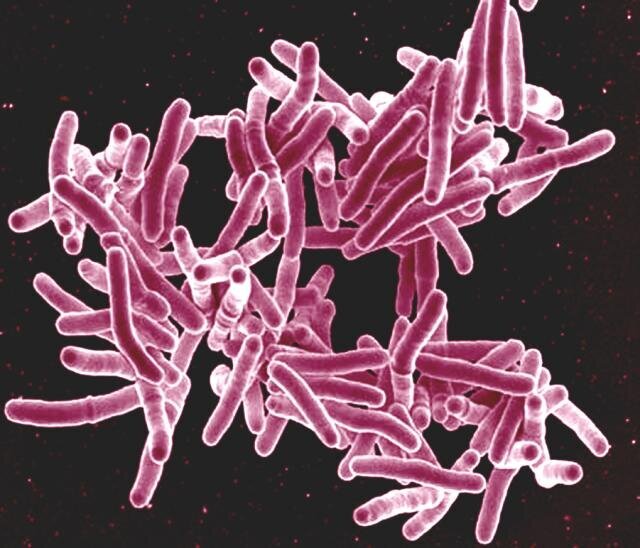#New studies identify how tuberculosis processes destroy the lungs and how to protect them

“#New studies identify how tuberculosis processes destroy the lungs and how to protect them”

Two new studies have cast unprecedented light on disease processes in tuberculosis, identifying key genetic changes that cause damage in the lungs and a drug treatment that could speed up recovery.
Tuberculosis (TB) is a lung infection that has killed more humans than any other, and until last year was the top infectious killer around the world. Globally, an estimated 10 million people develop the disease each year.
The findings are reported in two papers in the Journal of Clinical Investigation.
In the first study, a team from the University of Southampton used a new 3D culture system they have developed to observe the changes that occur in cells infected with TB. Unlike the laboratory-standard 2D culture system, where cells are placed in a flat plastic dish, the 3D system uses an engineering technique to suspend them in droplets—like frogspawn. The team found that the TB-infected cells in droplets responded very closely to cells in the lungs of patients with the disease.
This observation has widespread implications for further studies into infectious diseases, including COVID-19.
A second team from the University of Southampton then carried out complex sequencing techniques on the cells to identify the events through which TB causes excessive inflammation and damage to the lung.
Human genome sequencing methods generate information on tens of thousands of changes in genes from each sample, making it difficult to work out which changes are important and which are from chance. The Southampton Systems Immunology Group combined different mathematical approaches, such as clustering algorithms, to whittle this down to seven genes that seem to underpin the lung destruction that occurs in TB.
Dr. Michaela Reichmann of the University of Southampton, who conducted the study, said, “The integration of modern sequencing techniques with clinical samples is permitting unprecedented insight into disease mechanisms, while our 3D cell culture system then lets us replicate conditions in patients and identify new treatment approaches.”
In the second study, a clinical trial led by Dr. Catherine Ong of the National University of Singapore studied the use of a common antibiotic, doxycycline, to reverse these changes. The phase 2 double blind trial in 30 patients showed that doxycycline, in combination with TB drug treatment, reduces the size of lung cavities and accelerates markers of lung recovery towards health. These bioinformatics analyses were performed by the Systems Immunology Group in Southampton.
The treatment was found to be safe, with similar side effects to those experienced by patients on placebo pills. The study shows promise in delivering a new standard-of-care that can potentially prevent long term complications.
Dr. Ong said “Pulmonary TB patients tend to suffer from lung damage after TB, which is associated with mortality, and poorer quality of life. Doxycycline is a cheap and widely available antibiotic that can decrease lung damage, and potentially improve quality of life for these patients.”
The team now are seeking funds for a fully-powered larger scale phase 3 trial to verify these findings.
The international team are also aiming to translate these new insights into approaches that may shorten treatment from the current minimum of six months and improve treatment of drug resistant disease, which is progressively increasing.
The clinical trial was based on a collaboratory network involving the National University of Singapore, the University of Southampton and St George’s London, while the basic science study also involved the African Health Research Institute, Durban, and Yale and Columbia Universities in the United States.
Readily available antibiotic could help to curb lung damage from TB
Michaela T. Reichmann et al, Integrated transcriptomic analysis of human tuberculosis granulomas and a biomimetic model identifies therapeutic targets, Journal of Clinical Investigation (2021). DOI: 10.1172/JCI148136
Citation:
New studies identify how tuberculosis processes destroy the lungs and how to protect them (2021, June 15)
retrieved 15 June 2021
from https://medicalxpress.com/news/2021-06-tuberculosis-lungs.html
This document is subject to copyright. Apart from any fair dealing for the purpose of private study or research, no
part may be reproduced without the written permission. The content is provided for information purposes only.
If you liked the article, do not forget to share it with your friends. Follow us on Google News too, click on the star and choose us from your favorites.
For forums sites go to Forum.BuradaBiliyorum.Com
If you want to read more Like this articles, you can visit our Science category.



